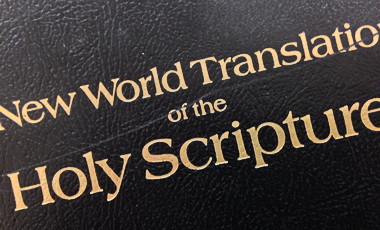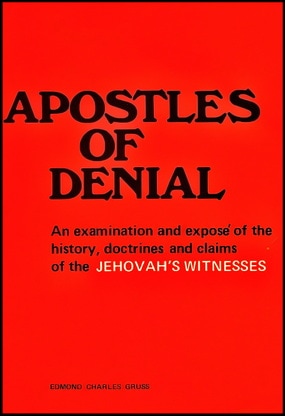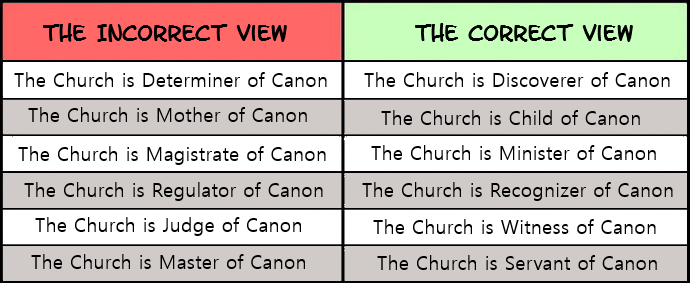JOHN 1:1-3
- 1. In the beginning was the Word, and the Word was with God, and the Word was a god. 2. This one was in the beginning with God. 3. All things came into existence through him, and apart from him not even one thing came into existence. (NEW WORLD TRANSLATION)
-
1. In the beginning was the Word, and the Word was with God, and the Word was God. 2. He was with God in the beginning. 3. All things were created through him, and apart from him not one thing was created that has been created. (CHRISTIAN STANDARD BIBLE, CSB)
I chose three excerpts below from a longer video to show how this Jehovah Witness (J-Dub) apologist rips peoples thoughts from their larger context. (LINK TO THE FULL VIDEO.) BTW, his videos are numerous and can keep the apologist busy in counter-cult responses. Also, it is worth pointing out as I watched the guy pick up and read from THE NET BIBLE, front pages, noting the contributors and scholastic notes. Something the NWT is missing. He sorta shot himself in the foot a bit with that as his inflection on the description was to give some weight or authority to it.
This should be paired with my:
THE NET BIBLE
This J-DUB Apologist misquotes, or, quotes out of context, not allowing the Bibles wonderful notes to speak for themselves:
1 In the beginning was the Word, and the Word was with God, and the Word was fully God. [1]
tn Or “and what God was the Word was.” Colwell’s Rule is often invoked to support the translation of θεός (theos) as definite (“God”) rather than indefinite (“a god”) here. However, Colwell’s Rule merely permits, but does not demand, that a predicate nominative ahead of an equative verb be translated as definite rather than indefinite. Furthermore, Colwell’s Rule did not deal with a third possibility, that the anarthrous predicate noun may have more of a qualitative nuance when placed ahead of the verb. A definite meaning for the term is reflected in the traditional rendering “the word was God.” From a technical standpoint, though, it is preferable to see a qualitative aspect to anarthrous θεός in John 1:1c (ExSyn 266–69). Translations like the NEB, REB, and Moffatt are helpful in capturing the sense in John 1:1c, that the Word was fully deity in essence (just as much God as God the Father). However, in contemporary English “the Word was divine” (Moffatt) does not quite catch the meaning since “divine” as a descriptive term is not used in contemporary English exclusively of God. The translation “what God was the Word was” is perhaps the most nuanced rendering, conveying that everything God was in essence, the Word was too. This points to unity of essence between the Father and the Son without equating the persons. However, in surveying a number of native speakers of English, some of whom had formal theological training and some of whom did not, the editors concluded that the fine distinctions indicated by “what God was the Word was” would not be understood by many contemporary readers. Thus the translation “the Word was fully God” was chosen because it is more likely to convey the meaning to the average English reader that the Logos (which “became flesh and took up residence among us” in John 1:14 and is thereafter identified in the Fourth Gospel as Jesus) is one in essence with God the Father. The previous phrase, “the Word was with God,” shows that the Logos is distinct in person from God the Father.
sn And the Word was fully God. John’s theology consistently drives toward the conclusion that Jesus, the incarnate Word, is just as much God as God the Father. This can be seen, for example, in texts like John 10:30 (“The Father and I are one”), 17:11 (“so that they may be one just as we are one”), and 8:58 (“before Abraham came into existence, I am”). The construction in John 1:1c does not equate the Word with the person of God (this is ruled out by 1:1b, “the Word was with God”); rather it affirms that the Word and God are one in essence.[2]
[1] Biblical Studies Press, The NET Bible, Second Edition (Denmark: Thomas Nelson, 2019), Jn 1:1,
[2] IBID.
So, the full context of the notes in the NET BIBLE show that the end result refutes the New World Translations rendering of John 1:1. Come on, give it up for the NET saying John 1:1c should read:
- TO WIT: what God was the Word was, or, the Word was fully God… rather, it [John 1:1] affirms that the Word and God are one in essence.
As well as the NET throwing Moffat and other translations under the short bus a tad.
JAMES R. WHITE
I really do hope curious Jehovah’s Witnesses see the video and go get these books to “disprove” Trinitarians. The free thinking J-Dubs may be blessed in a real sense by these “refutations”.
INDEFINITE, DEFINITE, QUALITATIVE, OR WHAT?
Before leaving John 1:1, we need to wrestle with the controversy that surrounds how to translate the final phrase. We’ve touched a bit on it above, but it would be good to lay out the possibilities. Without going into all the issues, the possible renderings fall into three categories:
Indefinite: hence, “a god.”
Definite: hence, “God.”
Qualitative: hence, “in nature God.”
Arguments abound about how to translate an “anarthrous preverbal predicate nominative,” and most people get lost fairly quickly when you start throwing terms like those around. Basically, the question we have to ask is this: how does John intend us to take the word θεός in the last clause? Does he wish us to understand it as indefinite, so that no particular “god” is in mind, but instead, that Jesus is a god, one of at least two, or even more? Or is θεός definite, so that the God is in view? Or does the position of the word (before the verb, adding emphasis), coupled with the lack of the article, indicate that John is directing us to a quality when he says the Word is θεός? That is, is John describing the nature of the Word, saying the Word is deity?
In reference to the first possibility, we can dismiss it almost immediately. The reasons are as follows:
Monotheism in the Bible—certainly it cannot be argued that John would use the very word he always uses of the one true God, θεός, of one who is simply a “godlike” one or a lesser “god.” The Scriptures do not teach that there exists a whole host of intermediate beings that can truly be called “gods.” That is gnosticism.
The anarthrous θεός—If one is to dogmatically assert that any anarthrous noun must be indefinite and translated with an indefinite article, one must be able to do the same with the 282 other times θεός appears anarthrously. For an example of the chaos that would create, try translating the anarthrous θεός at 2 Corinthians 5:19 (i.e., “a god was in Christ …”). What is more, θεός appears many times in the prologue of John anarthrously, yet no one argues that in these instances it should be translated “a god.” Note verses 6, 12, 13, and 18. There is simply no warrant in the language to do this.
No room for alternate understanding—It ignores a basic tenet of translation: if you are going to insist on a translation, you must be prepared to defend it in such a way so as to provide a way for the author to have expressed the alternate translation. In other words, if θεός ἦν ὁ λόγος is “the Word was a god,” how could John have said “the Word was God?” We have already seen that if John had employed the article before θεός, he would have made the terms θεός and λόγος interchangeable, amounting to modalism.
Ignores the context—The translation tears the phrase from the immediately preceding context, leaving it alone and useless. Can He who is eternal (first clause) and who has always been with God (second clause), and who created all things (verse 3), be “a god”?
F.F. Bruce sums up the truth pretty well:
It is nowhere more sadly true than in the acquisition of Greek that “a little learning is a dangerous thing.” The uses of the Greek article, the functions of Greek prepositions, and the fine distinctions between Greek tenses are confidently expounded in public at times by men who find considerable difficulty in using these parts of speech accurately in their native tongue.
A footnote appears after the comment on the article, and it says:
Those people who emphasize that the true rendering of the last clause of John 1:1 is “the word was a god,” prove nothing thereby save their ignorance of Greek grammar.
So our decision, then, must be between the definite understanding of the word and the qualitative. If we take θεός as definite, we are hard-pressed to avoid the same conclusion that we would reach if the word had the article; that is, if we wish to say the God in the same way as if the word had the article, we are making θεός and λόγος interchangeable. Yet the vast majority of translations render the phrase “the Word was God.” Is this not the definite translation? Not necessarily.
The last clause of John 1:1 tells us about the nature of the Word. The translation should be qualitative. We have already seen in the words of F. F. Bruce that John is telling us that the Word “shared the nature and being of God.” The New English Bible renders the phrase “what God was, the Word was.” Kenneth Wuest puts it, “And the Word was as to His essence absolute deity.” Yet Daniel Wallace is quite right when he notes:
Although I believe that θεός in 1:1c is qualitative, I think the simplest and most straightforward translation is, “and the Word was God.” It may be better to clearly affirm the NT teaching of the deity of Christ and then explain that he is not the Father, than to sound ambiguous on his deity and explain that he is God but is not the Father.
Here we encounter another instance where the English translation is not quite up to the Greek original. We must go beyond a basic translation and ask what John himself meant.
In summary, then, what do we find in John 1:1? In a matter of only seventeen short Greek words, John communicates the following truths:
The Word is eternal—He has always existed and did not come into existence at a point in time.
The Word is personal—He is not a force, but a person, and that eternally. He has always been in communion with the Father.
The Word is deity—The Word is God as to His nature.
We would all do well to communicate so much in so few words! But he did not stop at verse 1. This is but the first verse of an entire composition. We move on to examine the rest.[1]
[1] James R. White, The Forgotten Trinity (Minneapolis, MN: Bethany House Publishers, 1998), 55–58.
This next quote I really couldn’t believe, have read through large swaths of this book during my seminary years.
DANIEL B. WALLACE
I have a link to a reference Doc Wallace uses that takes you directly to the source in the excerpt.
Application of Colwell’s Construction to John 1:1
John 1:1 states: Ἐν ἀρχῇ ἦν ὁ λόγος, καὶ ὁ λόγος ἦν πρὸς τὸν θεόν, καὶ θεὸς ἦν ὁ λόγος. In the last part of the verse, the clause καὶ θεὸς ἦν ὁ λόγος (John 1:1c), θεός is the PN. It is anarthrous and comes before the verb. Therefore, it fits Colwell’s construction, though it might not fit the rule (for the rule states that definiteness is determined or indicated by the context, not by the grammar). Whether it is indefinite, qualitative, or definite is the issue at hand.
- Is Θεός in John 1:1c Indefinite?
If θεός were indefinite, we would translate it “a god” (as is done in the New World Translation [NWT]). If so, the theological implication would be some form of polytheism, perhaps suggesting that the Word was merely a secondary god in a pantheon of deities.
The grammatical argument that the PN here is indefinite is weak. Often, those who argue for such a view (in particular, the translators of the NWT) do so on the sole basis that the term is anarthrous. Yet they are inconsistent, as R. H. Countess pointed out:
In the New Testament there are 282 occurrences of the anarthrous θεός. At sixteen places NWT has either a god, god, gods, or godly. Sixteen out of 282 means that the translators were faithful to their translation principle only six percent of the time.…
The first section of John-1:1–18—furnishes a lucid example of NWT arbitrary dogmatism. Θεός occurs eight times-verses 1, 2, 6, 12, 13, 18—and has the article only twice-verses 1, 2. Yet NWT six times translated “God,” once “a god,” and once “the god.” [1] (See page 54, you can turn to 55 once there.)
If we expand the discussion to other anarthrous terms in the Johannine Prologue, we notice other inconsistencies in the NWT: It is interesting that the New World Translation renders θεός as “a god” on the simplistic grounds that it lacks the article. This is surely an insufficient basis. Following the “anarthrous = indefinite” principle would mean that ἀρχῇ should be “a beginning” (1:1, 2), ζωὴ should be “a life” (1:4), παρὰ θεοῦ should be “from a god” (1:6), Ἰωάννης should be “a John” (1:6), θεόν should be “a god” (1:18), etc. Yet none of these other anarthrous nouns is rendered with an indefinite article. One can only suspect strong theological bias in such a translation.
According to Dixon’s study, if θεός were indefinite in John 1:1, it would be the only anarthrous pre-verbal PN in John’s Gospel to be so. Although we have argued that this is somewhat overstated, the general point is valid: The indefinite notion is the most poorly attested for anarthrous pre-verbal predicate nominatives. Thus, grammatically such a meaning is improbable. Also, the context suggests that such is not likely, for the Word already existed in the beginning. Thus, contextually and grammatically, it is highly improbable that the Logos could be “a god” according to John. Finally, the evangelist’s own theology militates against this view, for there is an exalted Christology in the Fourth Gospel, to the point that Jesus Christ is identified as God (cf. 5:23; 8:58; 10:30; 20:28, etc.).
- Is Θεός in John 1:1c Definite?
Grammarians and exegetes since Colwell have taken θεός as definite in John 1:1c. However, their basis has usually been a misunderstanding of Colwell’s rule. They have understood the rule to say that an anarthrous pre-verbal PN will usually be definite (rather than the converse). But Colwell’s rule states that a PN which is probably definite as determined from the context which precedes a verb will usually be anarthrous. If we check the rule to see if it applies here, we would say that the previous mention of θεός (in 1:1b) is articular. Therefore, if the same person being referred to there is called θεός in 1:1c, then in both places it is definite. Although certainly possible grammatically (though not nearly as likely as qualitative), the evidence is not very compelling. The vast majority of definite anarthrous pre-verbal predicate nominatives are monadic, in genitive constructions, or are proper names, none of which is true here, diminishing the likelihood of a definite θεός in John 1:1c.
Further, calling θεός in 1:1c definite is the same as saying that if it had followed the verb it would have had the article. Thus it would be a convertible proposition with λόγος (i.e., “the Word” = “God” and “God” = “the Word”). The problem of this argument is that the θεός in 1:1b is the Father. Thus to say that the θεός in 1:1c is the same person is to say that “the Word was the Father.” This, as the older grammarians and exegetes pointed out, is embryonic Sabellianism or modalism.[2] The Fourth Gospel is about the least likely place to find modalism in the NT.
- Is Θεός in John 1:1c Qualitative?
The most likely candidate for θεός is qualitative. This is true both grammatically (for the largest proportion of pre-verbal anarthrous predicate nominatives fall into this category) and theologically (both the theology of the Fourth Gospel and of the NT as a whole). There is a balance between the Word’s deity, which was already present in the beginning (ἐν ἀρχῇ … θεὸς ἦν [1:1], and his humanity, which was added later (σὰρξ ἐγένετο [1:14]). The grammatical structure of these two statements mirrors each other; both emphasize the nature of the Word, rather than his identity. But θεός was his nature from eternity (hence, εἰμί is used), while σάρξ was added at the incarnation (hence, γίνομαι is used).
Such an option does not at all impugn the deity of Christ. Rather, it stresses that, although the person of Christ is not the person of the Father, their essence is identical. Possible translations are as follows: “What God was, the Word was” (NEB), or “the Word was divine” (a modified Moffatt). In this second translation, “divine” is acceptable only if it is a term that can be applied only to true deity. However, in modern English, we use it with reference to angels, theologians, even a meal! Thus “divine” could be misleading in an English translation. The idea of a qualitative θεός here is that the Word had all the attributes and qualities that “the God” (of 1:1b) had. In other words, he shared the essence of the Father, though they differed in person. The construction the evangelist chose to express this idea was the most concise way he could have stated that the Word was God and yet was distinct from the Father. [3]
Daniel B. Wallace, Greek Grammar beyond the Basics: An Exegetical Syntax of the New Testament (Grand Rapids, MI: Zondervan, 1996), 266–269.
THREE FOOTNOTES I THOUGHT WERE RELEVANT:
[1] R. H. Countess, The Jehovah’s Witnesses’ New Testament: A Critical Analysis of the New World Translation of the Christian Greek Scriptures (Philipsburg, N. J.: Presbyterian and Reformed, 1982) 54–55.
[2] Before 1933 NT commentators saw θεός as qualitative. For example, in Westcott’s commentary on John: “It is necessarily without the article (θεός not ὁ θεός) inasmuch as it describes the nature of the Word and does not identify His Person. It would be pure Sabellianism to say ‘the Word was ὁ θεός.’ ”
Robertson, Grammar, 767–68: “ὁ θεὸς ἦν ὁ λόγος (convertible terms) would have been pure Sabellianism.… The absence of the article here is on purpose and essential to the true idea.”
Lange’s commentary on John: “Θεός without the article signifies divine essence, or the generic idea of God in distinction from man and angel; as σάρξ, ver. 14, signifies the human essence or nature of the Logos. The article before θεός would here destroy the distinction of pesonality and confound the Son with the Father.”
Chemnitz says: “θεός sine artic. essentialiter, cum artic. personaliter.”
Alford points out: “The omission of the article before θεός is not mere usage; it could not have been here expressed, whatever place the words might hold in the sentence. ὁ λόγος ἦν ὁ θεός would destroy the idea of the λόγος altogether. θεός must then be taken as implying God, in substance and essence,—not ὁ θεός, ‘the Father,’ in Person.… as in σὰρξ ἐγένετο [John 1:14], σάρξ expresses that state into which the Divine Word entered by a definite act, so in θεὸς ἦν, θεός expresses that essence which was His ἐν ἀρχῇ:—that He was very God. So that this first verse might be connected thus: the Logos was from eternity,—was with God (the Father),—and was Himself God.”
Luther states it succinctly: “ ‘the Word was God’ is against Arius; ‘the Word was with God’ against Sabellius.”
[3] Although I believe that θεός in 1:1c is qualitative, the simplest and most straightforward translation is, “and the Word was God.” It may be better to clearly affirm the NT teaching of the deity of Christ and then explain that he is not the Father, than to sound ambiguous on his deity and explain that he is God but is not the Father.
To the contrary of the three excerpts of the points made by this J-Dub apologist… the facts don’t fit the narrative.
Edmund C. Gruss, Apostles of Denial; an Examination and Expose of the History, Doctrine and Claims of the Jehovah’s Witness (Phillipsburg, NJ: Presbyterian & Reformed Pub Co, 1970). (FREE TO VIEW HERE)
PAGES 118-119
On page 776 of the Appendix the New World Translation translators quote from the recognized authority, A. T. Robertson, in support of their “a god” rendering: “Among the ancient writers ho theos was used of the god of absolute religion in distinction from the mythological gods.”32 (Supposedly proving that God with the definite article is to be distinguished from God without the article.) What the translators failed to include was Robertson’s further statement: “In the N. T. however, while we have pros ton theon (John 1:1, 2), it is far more common to find simply theos, especially in the Epistles.”33
On pages 774 and 775 the translators quote Dana and Mantey who they misuse, as a check of these citations demon-strate.34
To this evidence also may be added the weight of the great majority of the translations and versions now in existence, as well as almost every recognized Greek scholar. The writer has checked over twenty translations as well as many commentaries based on the Greek, and in every case (except for Moffatt’s and Goodspeed’s readings) the translation “the Word was God” or its equivalent was found.35
One of the strongest arguments against the New World Translation reading is the fact that such a reading would be absolutely abominable to the Jewish ear. The Jews were strict monotheists and to accept the Witnesses’ translation would make John guilty of polytheism. The New Testament makes it clear that the believers were worshipping Christ (Matt. 14:83; 28:9, 17; John 20:28).36
On page 107, the Jehovah’s Witnesses introduce four more verses, three of which are wrongly understood. The argument is as follows: (1) “Psalm 90:2 declares that God is `from everlasting to everlasting’.” (2) If this is true Jesus could not be God for He had a beginning. (3) Proof that Jesus Christ did have a beginning is found in Revelation 3:14; John 1:14; and Colossians 1:15.
Revelation 3:14 is quoted according to the New World Translation rendering which makes Christ “the beginning of the creation by God.” On the surface this verse seems to say that Christ was God’s first creation, but an examination of the scripture shows this understanding is not acceptable. The first thing which is erroneous is the translation of the verse. The translation “by God” cannot be justified, for the genetive tou theou, means “of God” and not “by God.” For the translation given by the Witnesses the genitive would require the proposition hupo, which is not found in the passage.37 The second word which is wrongly understood is the Greek word arche, translated “beginning.” Concerning
32 A. T. Robertson, A Grammar of the Greek New Testament in the Light of Historical Research (fourth edition; New York: George H. Doran Company, 1923), p. 761. Arndt-Gingrich state that then is used of “the true God, sometimes with, sometimes without the article.” Arndt-Gingrich, op. cit., p. 357.
33 Robertson, loc. cit.
34 Cf. H. E. Dana and Julius R. Mantey, A Manual Grammar of the Greek New Testament (New York: The Macmillian Company, 1955), pp. 140, 148, 149. See Dr. Mantey’s own reaction in M. Van Buskirk’s The Scholastic Dishonesty of The Watchtower (Canis, P.O. Box 1783, Santa Ana, Calif. 92702).
35 An interesting and informative presentation on the deity of Christ with special reference to John 1:1 and the Witnesses’ official reply is found in the article by Victor Perry, “Jehovah’s Witnesses and the Deity of Christ,” The Evangelical Quarterly, 35:15-22, January-March, 1963.
36 “For an excellent presentation on worship given to Christ see: Anthony A. Hoekema, The Four Major Cults (Grand Rapids: Wm. B. Eerdmans Publishing Company, 1963), pp. 889-44.
37 “Dana and Mantey, op. cit., p. 112: “In fact, agency is expressed with the aid of hupo more frequently than it is by all the other methods combined.”
Page 208-211
5. Arbitrary use and non-use of capitals when dealing with the divine name. The place where this is especially evident is John 1:1 where the New World Translation translates “the Word was a god.” According to the Witnesses’ argument “god” appears here without the article. If this is the rule that the Witnesses themselves establish, why are they not consistent? In John 1: 18, which is a parallel passage, why have they not translated it: “No man has seen a god,” as there is no definite article before “God”? The same might be asked concerning Romans 8:8; Philippians 2:6; and Philippians 2:11. It also causes one to wonder, if Christ is “god” with a little “g,” how, when Thomas in John 20:28 gives his great declaration of faith to Christ’s deity, does the NWT have “My Master and my God.” It can be seen that the theos in John 20:28 is with the definite article, but how can the translators apply both “god” and “God” to Christ in the same book?
Other reviewers’ comments on the New World Translation of the Christian. Greek Scriptures. What do qualified men say concerning this Watch Tower translation? What is the purpose of the translation?
Ray C. Stedman writes:
. . . A close examination, which gets beneath the outward veneer of scholarship, reveals a veritable shambles of bigotry, ignorance, prejudice, and bias which violates every rule of biblical criticism and every standard of scholarly integrity.42
Henry J. Heydt draws his conclusion:
“We consider the New World Translation a gross miscarriage of what a translation should be, and a biased travesty of God’s Holy Word.”43
Martin and Klann conclude their chapter on the New World Translation with the following comments:
Once it is perceived that Jehovah’s Witnesses are only interested in what they can make the Scriptures say, and not in what the Holy Spirit has already perfectly revealed, then the careful student will reject entirely Jehovah’s Witnesses and their Watchtower translations.44
F. E. Mayer shows the purpose of the translation as he writes:
The New World Translation sets forth other distinctive views which are essential to the entire doctrinal structure of the witnesses’ message. It is a version that lends support to the denial of doctrines which the Christian churches consider basic, such as the co-equality of Jesus Christ with the Father, the personhood of the Holy Spirit, and the survival of the human person after physical death. It teaches the annihilation of the wicked, the non-existence of hell, and the purely animal nature of man’s soul.45
Lewis W. Spitz, writing in the Introduction to Mayer’s booklet, Jehovah’s Witnesses says:
The purpose of this translation is to support the basic tenets of the cult with the use of its own sectarian terminology. Theological discussions with the Witnesses will in the future prove more futile, for they will insist on using this translation as their authority. 46
In his appraisal of the entire translation Anthony Hoekema says that:
their New World Translation of the Bible is by no means an objective rendering of the sacred text into modern English, but is a biased translation in which. many of the peculiar teachings of the Watchtower Society are smuggled into the text of the Bible itself. 48
In a balanced statement dealing with the New World Translation F. F. Bruce states that
some of its distinctive renderings reflect the biblical interpretations which we have come to associate with Jehovah’s Witnesses (e.g. “‘the Word was a god” in John 1:1). . . . Some of the renderings which are free from a theological tendency strike one as quite good. . . .48
Bruce M. Metzger in his article “The Jehovah’s Witnesses and Jesus Christ,” clearly shows the errors of many Christological passages found in the New World Translation. For the reader who either agrees or disagrees with this reviewer’s comments, this writer urges a study into the evidence presented by Metzger and the articles of the other reviewers cited.
Conclusion. After just this cursory look at the New World Translation of the Christian Greek Scriptures the honest mind can only conclude that this work, although outwardly scholarly, is plainly in many places, just the opposite. Its purpose is to bring the errors of the Witnesses into the Word of God. This translation carries no authority except to its originators and their faithful followers, and should be rejected as a perversion of the Word of God.
42 Ray C. Stedman, “The New World Translation of the Christian Greek Scriptures,” Our Hope, 50:34, July, 1953. p. 30.
43 Henry J. Heydt, Jehovah’s Witnesses: Their Translation (New York: American Board of Missions to the Jews, Inc., [n. d.]), p. 9. John 13:18 has been revised in the 1961 edition., p. 19.
44 Walter R. Martin and Norman H. Klann, Jehovah of the Watchtower (sixth revised edition, 1963; Grand Rapids: Zondervan Publishing House, 1953), p. 161.
45 F. E. Mayer, The Religious Bodies of America (fourth edition; St. Louis, Missouri: Concordia Publishing House, 1956), p. 469.
46 F. E. Mayer, Jehovah’s Witnesses (revised 196?; St. Louis, Missouri: Concordia Publishing House, 1942), p. 4.
47 Anthony A. Hoekema, The Four Major Cults (Grand Rapids, MI: Wm. B. Eerdmans Publishing Company, 1968), pp. 288, 239.
48 F. F. Bruce, The English Bible: A History of Translation (London: Lutterworth Press, 1961), p. 184.
PAGES 132-133
One Old Testament reference should be mentioned: in Isaiah 9:6 the Messiah is designated the “Mighty God,” even in the New World Translation. The Hebrew words translated “Mighty God” (el gibbor) in Isaiah 9:6 also appear in Isaiah 10:21. This reference uses the identical expression to identify Jehovah. Hoekema points out that this designation “is, in Old Testament literature, a traditional designation of Jehovah—see Deuteronomy 10:17, Jeremiah 32:18, and Nehemiah 9:32.”66 When Witnesses attempt to make a dis Unction and say that Christ is a “Mighty God” and Jehovah alone is the “Almighty God,” they must violate the Scriptures and teach polytheism. The New World Translation rendering of Isaiah 44:6-9 shows that the Witnesses are wrong: “‘. . . Besides me there is no God. . . . Does there exist a God besides me? No, there is no Rock’.”
True, others are designated “gods” (angels, idols, false gods, magistrates), but these are never made objects of true worship. Paul makes the situation clear in I Corinthians 8: 4-6: 4-6 :
. . . There is no God but one. For even though there are those who are called “gods,” whether in heaven or on earth, just as there are many “gods” and many “lords,” there is actually to us one God the Father, out of whom all things are, and we for him, and there is one Lord, Jesus Christ, through whom all things are, and we through him [NWT].
B. B. Warfield remarks cogently: “You cannot prove that only one God exists by pointing out that you yourself have two.”67 When the Witnesses admit that there is a “Mighty God” and an “Almighty God” they are doing just this and they make the admission that they are polytheists!
Arndt-Gingrich point out that Ignatius (died c. 110) calls Christ “God” in many passages.68 He is an important witness to the Christological thought of the early Church because he was born shortly before or after the ascension and his life spanned the writing of the New Testament. In his Epistles to the Ephesians and to the Romans he used such expressions as: “Jesus Christ our God,” “in the blood of God,” and “our God Jesus Christ” Ignatius also wrote: “For our God, Jesus Christ, was conceived in the womb of Mary…. God appeared in the likeness of man.” At another place he stated: “Permit me to be an imitator of the passion of my God.”69 It is evident that the Christological statements of John and Paul were preserved by Ignatius.
66 Anthony A. Hoekerna, The Four Major Cults (Grand Rapids: Wm. B. Eerdmans Publishing Company, 1963), p. 332.
67 Benjamin B. Warfieid, Biblical and Theological Studies (Philadelphia: The Presbyterian and Reformed Publishing Company, 1952), p. 75, 76.
68 Walter Bauer, A Greek-English Lexicon of the New Testament and Other Earlij Christian luiteratitre, ed. and trans. William F. Arndt and F. Wilbur Gingrich (Chicago: The University of Chicago Press, 1957), p. 367.
69 J. B. Lightfoot, The Apostolic Fathers, ed. J. R. Harmer (1891 edition; Grand Rapids: Baker Book House, 1962), pp. 63-68, 75-79







